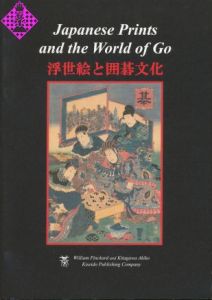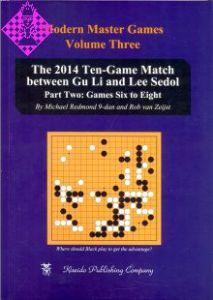Artikelnummer
LGDAVTES/EG03
Autor
Tesuji
Elementary Go Series, Vol. 3
198 Seiten, kartoniert, Kiseido, 5. Auflage 1995
Aus der Reihe »Elementary Go Series«
Tesujis are the tactics of short range combat in the game of go. This volume presents over three hundred examples and problems of them, aimed at training the reader to read and spot the right play in all sorts of tactical situations. It covers a wide range of material while concentrating on fundamentals; its problems manage to be both hard enough to challenge and easy enough to solve, and there are enough of them to keep the most avid busy.
Tesujis are the tactics of short range combat in the game of go. This volume presents over three hundred examples and problems of them, aimed at training the reader to read and spot the right play in all sorts of tactical situations. It covers a wide range of material while concentrating on fundamentals; its problems manage to be both hard enough to challenge and easy enough to solve, and there are enough of them to keep the most avid busy.
| EAN | 9784906574124 |
|---|---|
| Gewicht | 196 g |
| Hersteller | Kiseido |
| Medium | Buch |
| Erscheinungsjahr | 1995 |
| Autor | James Davies |
| Reihe | Elementary Go Series |
| Sprache | Englisch |
| Auflage | 5 |
| Seiten | 198 |
| Einband | kartoniert |
| Name | Kiseido Publishing Company |
|---|
005 1. Reading
014 2. Capture the Cutting Stones
030 3. Amputate the Cutting Stones
044 4. Ko
060 5. When Liberties Count
090 6. Linking Groups Together
104 7. Cutting Groups Apart
114 8. Into Enemy Territory
124 9. Escape
132 10. Sacrifice to Gain Tempo
140 11. Tesuji for Attack
154 12. How to Connect
164 13. Making Shape
182 14. Ignore the Atari
190 15. Double-Threat Tesuji
194 16. Challenge Problems
014 2. Capture the Cutting Stones
030 3. Amputate the Cutting Stones
044 4. Ko
060 5. When Liberties Count
090 6. Linking Groups Together
104 7. Cutting Groups Apart
114 8. Into Enemy Territory
124 9. Escape
132 10. Sacrifice to Gain Tempo
140 11. Tesuji for Attack
154 12. How to Connect
164 13. Making Shape
182 14. Ignore the Atari
190 15. Double-Threat Tesuji
194 16. Challenge Problems
This book covers the elementary tactics of the game of go, apart from those of life and death and of the endgame which have been saved for other volumes. Problems, which the reader should try to solve as he reads along, fill about half the pages. Most of them will yield to a direct application of the ideas in the text, although in some of the problems at the ends of the chapters the reader will be on his own.
I am indebted to Richard Bozulich and James Kerwin for contributing problems and examples and for proofreading, and in particular to James Kerwin for making suggestions that led to the writing of chapter one and the organization of the book in its present form.
James Davies, Tokyo, January 1975, preface
I am indebted to Richard Bozulich and James Kerwin for contributing problems and examples and for proofreading, and in particular to James Kerwin for making suggestions that led to the writing of chapter one and the organization of the book in its present form.
James Davies, Tokyo, January 1975, preface
Mehr von Kiseido
-
 In the Beginning17,95 €
In the Beginning17,95 € -
 Invincible47,50 €
Invincible47,50 € -
 Making Good Shape24,95 €
Making Good Shape24,95 € -
 Joseki Revolution24,95 €
Joseki Revolution24,95 € - Mehr von Kiseido




